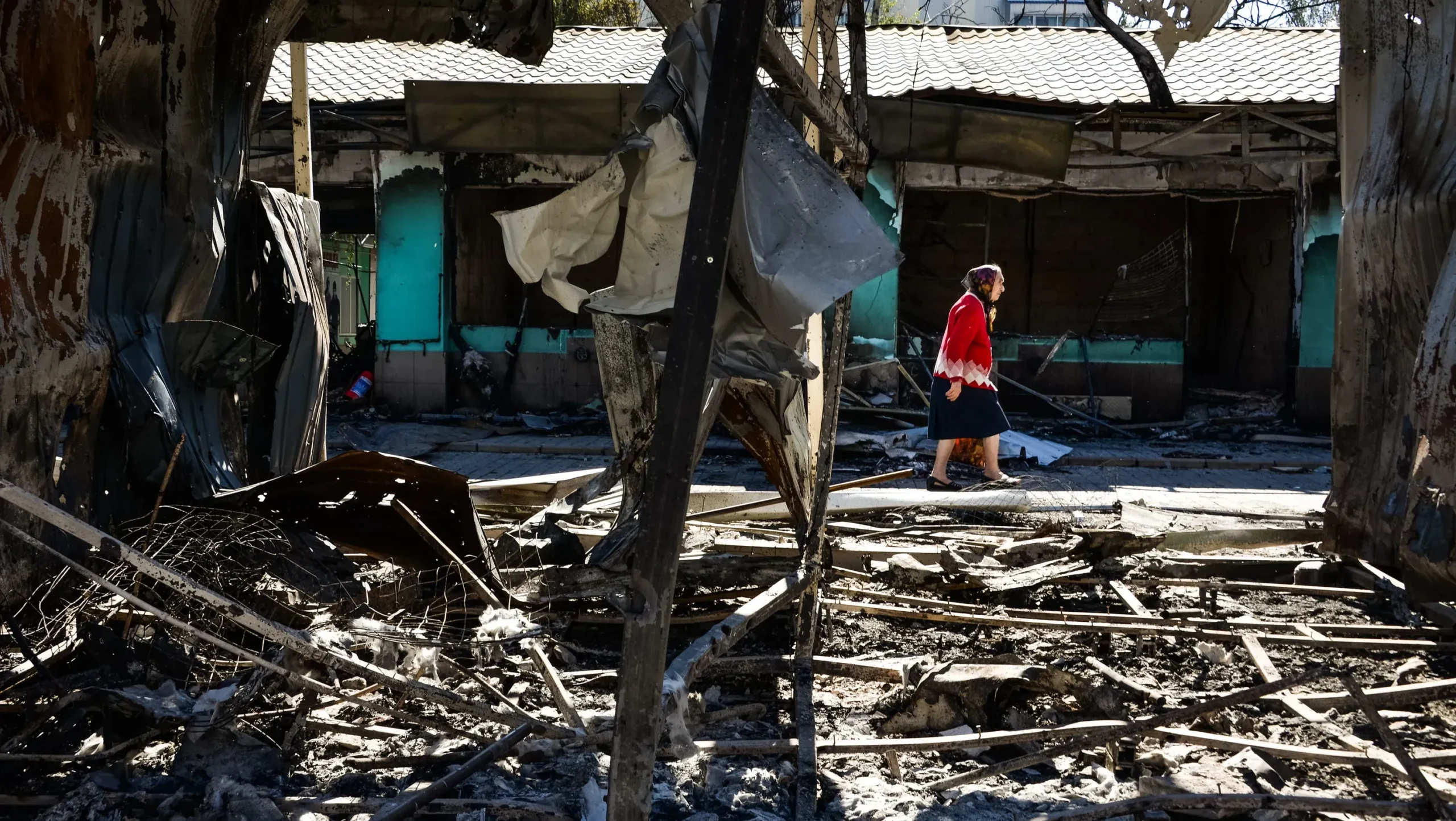Russia Ukraine Conflict: Insights from U.S. Military Expert

The Russia Ukraine conflict has escalated dramatically since the initial invasion in 2014, marking a significant flashpoint in global geopolitics. As the U.S. military assessment reveals, Russian military strategy continues to be dominated by relentless missile and drone attacks against Ukrainian cities, despite their inability to achieve notable successes on the battlefield. Former commander of the U.S. Ground Forces in Europe, Ben Hodges, highlighted that the Russian forces control only 20% of Ukrainian territory, yet they persist in launching assaults that ultimately yield minimal gains. Moreover, the Black Sea Fleet, which is touted to be formidable, falls short of expectations in terms of effectiveness and control over the region. As drone warfare becomes a central feature of this conflict, the resilience of Ukraine’s defense capabilities reflects a turning tide that seems unfavorable for Russia in the long run.
The ongoing situation in Eastern Europe, often referred to as the Russo-Ukrainian War, reveals the complexities of international relations and military strategy in the 21st century. This conflict showcases a persistent struggle for territorial integrity and national sovereignty, wherein Ukraine fights to repel aggressors backed by questionable military prowess. Insights from military analysts and former military officials indicate that the strategic deployments of Russian armed forces, including their aspirations to dominate the Black Sea, fundamentally challenge their overall objectives. Additionally, innovations in drone technology play a pivotal role in shaping modern warfare, highlighting Ukraine’s advancements in defense mechanisms. With each skirmish and tactical maneuver, the stakes rise, and the implications of this conflict resonate far beyond regional borders.
Analysis of the Current U.S. Military Assessment on Ukraine
The recent comments by Ben Hodges, former commander of the U.S. Ground Forces in Europe, provide a sobering assessment of the ongoing conflict in Ukraine. According to Hodges, the Russian military strategy appears to focus on launching missile and drone attacks on Ukrainian cities, with little regard for the substantial losses being inflicted on their own forces. His insights underscore the situation on the ground, revealing that even minor territorial gains won’t lead to victory for Russia, particularly as Ukraine’s defense continues to evolve and strengthen.
This analysis aligns with broader evaluations of U.S. military assessments which suggest that Russia’s air forces have been unable to achieve air superiority, a critical factor in modern warfare. The inability to disrupt logistics, such as train convoys transporting critical supplies from Poland to Ukraine, highlights significant shortcomings in Russian military capabilities. This situation is exacerbated by the Russian military’s reliance on outdated strategies, as they struggle to adapt to contemporary wartime dynamics.
Russia Ukraine Conflict: A Stalemate on the Battlefield
The Russia Ukraine conflict has reached a debilitating stalemate, with neither side able to secure a decisive advantage. Hodges’ assessment about Russian forces only controlling about 20% of Ukraine emphasizes the longstanding nature of this conflict. The alleged Russian superiority in numbers does not translate into battlefield success due to effective Ukrainian defense strategies and the continuous support they receive from Western allies.
Moreover, the concept of attrition warfare seems to underpin Russian strategy, where they continue to attack with missiles and drones despite suffering high casualties. This relentless approach appears unsustainable in the long run, especially as Ukraine improves its defensive capabilities and develops its own military technology, which includes a burgeoning defense industry that has gained momentum since the start of the conflict.
The Role of the Black Sea Fleet in the Conflict
While the Black Sea Fleet has historically been viewed as a formidable asset of the Russian military, Hodges’ remarks suggest that its effectiveness in the current context has been overstated. Despite its strong posture, the fleet has struggled in operational capabilities, particularly against a determined and strategic Ukrainian defense. Ukraine’s successes in western regions of the Black Sea illustrate the changing dynamics of naval warfare and the reliance on advanced technology and strategies.
The implications of the Black Sea Fleet’s weaknesses extend beyond naval engagements, affecting broader Russian military operations and logistics. The inability to project power effectively from the sea allows Ukraine to fortify its coastal defenses and secure shipping lanes, further complicating Russian efforts to maintain a foothold in maritime operations.
Insights into Russian Drone Warfare Tactics
As noted by Hodges, Russia is ramping up its production of strike drones, with plans to manufacture hundreds of them daily by the end of 2025. This escalation in drone warfare tactics indicates an adaptation by Russian forces to modern combat requirements. The use of unmanned aerial vehicles (UAVs) has the potential to reshape the battlefield dynamics, allowing for asymmetric strikes that could challenge conventional Ukrainian defenses.
However, the effectiveness of this drone strategy is still in question. The sheer volume of drones does not guarantee success if countermeasures are in place. Ukraine has demonstrated remarkable resilience and innovation in addressing drone threats, utilizing a mix of electronic warfare and defensive systems. This evolving battlefield reality signifies that while Russia may be intending to dominate through quantity, Ukraine’s response capabilities will be crucial in determining the outcome of such tactics.
Implications of Russian Economic Struggles on Military Strategy
The ongoing economic turmoil within Russia, as highlighted by Hodges, poses significant challenges to its military campaign in Ukraine. The heavy dependence on China and the lack of a sustainable economic model limit Russia’s ability to maintain its military operations over the long term. This economic strain could lead to decreased funding for military endeavors, ultimately affecting troop morale and operational readiness.
As the conflict drags on, the sustainability of Russia’s military strategy will likely come into question. If their economic support falters, it could diminish their capacity to produce arms, sustain troops, and bolster their defense capabilities against Ukraine’s increasingly robust military response. This situation creates a potentially exploitable weakness for Ukraine, which may lead to opportunities for counteroffensive operations.
The Resilience of Ukrainian Defense Strategies
Ukrainian defense strategies have proven remarkably resilient against continuous assaults from Russian forces. Hodges attributes this tenacity to both the skill and determination of Ukrainian defenders, as well as the significant advances made in developing domestic defense capabilities. The ongoing conflict has catalyzed an accelerated growth in Ukraine’s military-industrial complex, enhancing the country’s self-sufficiency in arms production.
Moreover, the integration of Western support into Ukrainian defense strategies — including military aid and training — has further empowered their ability to counter Russian advances. The cohesive strategy of leveraging international logistics and advanced technologies has positioned Ukraine to effectively resist and retaliate against Russian aggression, illustrating the evolving nature of modern warfare.
The Long-Term Outlook of the Russia Ukraine Conflict
Considering the assessments shared by military experts like Hodges, the long-term outlook of the Russia Ukraine conflict appears grim for Russia. With constant military engagements yielding limited results and significant losses on both sides, the prospects for a swift Russian victory seem increasingly remote. The inability to effectively adapt and evolve strategies in line with the conditions of modern warfare further complicates their situation.
As the conflict draws on, the indomitable spirit of the Ukrainian defense combined with growing international support may tip the scales over time. The sustainability of Russian aggression will inevitably be called into question, particularly as domestic unrest may rise due to economic hardships fed by the protracted war. The future of this conflict, therefore, hinges not only on military tactics but also on the socio-political dynamics within Russia and Ukraine.
Challenges Facing the Russian Military Going Forward
The Russian military faces numerous challenges moving forward, especially regarding sustaining their military initiatives against a persistent Ukrainian defense. Hodges emphasizes that despite short gains, the broader context reveals a deeply entrenched opposition that significantly rations Russian success on the battlefield. The reliance on outdated military doctrines alongside a faltering economy presents a multifaceted crisis for Russian military strategists.
Moreover, increased visibility of Western military assistance to Ukraine may further complicate Russian plans. As Ukraine continues to receive advanced weaponry and strategic intelligence sharing, the effectiveness of Russian assaults may diminish, resulting in a continued disproportionate loss of lives and resources. Ultimately, these elements signal an ongoing deterioration of Russian battlefield effectiveness, with long-term consequences for their operational strategy.
Future Military Innovations and Developments in Ukraine
The conflict in Ukraine has triggered rapid military innovations, setting a precedent for how modern warfare is conducted. Hodges pointed out that one of the remarkable facets of this conflict is Ukraine’s ability to transform as a result of ongoing hostilities, thus ensuring that they are not merely passive recipients of foreign aid but active developers of their defense capabilities. This evolution includes the integration of advanced technology in their military strategies.
As Ukraine embraces new military technologies, including drone warfare and cyber capabilities, it effectively levels the playing field against a traditionally larger adversary. This momentum fosters a competitive edge that could significantly alter the course of the conflict, as better-equipped forces can conduct strategic operations that further disrupt Russian military objectives.
Frequently Asked Questions
What is the current U.S. military assessment of the Russia Ukraine conflict?
The current U.S. military assessment indicates that despite ongoing missile and drone attacks, Russia’s advances in the Russia Ukraine conflict are minimal, with only 1-2 kilometers gained on the front lines being deemed insufficient for victory. Former commander Ben Hodges emphasizes that Russia lacks the capability to sustain its efforts or achieve air superiority.
How has Russian military strategy evolved in the Russia Ukraine conflict?
Russian military strategy in the Russia Ukraine conflict has focused on missile and drone strikes against Ukrainian cities, as well as assaults on front lines. However, this approach has not resulted in significant territorial gains, indicating a need for a reassessment of their military tactics, especially considering the difficulties they face in logistics and air control.
What challenges does Ukraine face in its defense against Russian forces?
Ukraine’s defense against Russian forces in the Russia Ukraine conflict is bolstered by the tenacity and skill of its defenders, along with an evolving domestic defense industry. Despite ongoing threats, including drone warfare from Russia, Ukraine has proven effective in repelling attacks and maintaining control over much of its territory.
What role does the Black Sea Fleet play in the Russia Ukraine conflict?
The Black Sea Fleet has been part of Russia’s military posture in the Russia Ukraine conflict; however, its operational effectiveness has been questioned. Former U.S. commander Hodges noted that while the fleet holds a strong reputation, it has been outperformed by Ukrainian forces in the Black Sea, highlighting significant limitations in Russia’s naval capabilities.
How is drone warfare affecting the Russia Ukraine conflict?
Drone warfare has become increasingly pivotal in the Russia Ukraine conflict, with Russia ramping up production of strike drones. By the end of 2025, Russia plans to launch up to 500 drones per day. This shift reflects a reliance on unmanned aerial vehicles for operational impact, despite the challenges posed by Ukraine’s defensive measures.
What economic factors are influencing Russia’s capacity in the Ukraine conflict?
Economic issues are severely impacting Russia’s ability to sustain its military efforts in the Russia Ukraine conflict. The Russian economy, heavily reliant on China, is facing significant challenges and artificial support, which suggests that their current military strategy may not be viable in the long term.
| Key Points |
|---|
| Former commander Ben Hodges reports that Russia’s attacks will continue, particularly against Ukrainian cities with missiles and drones. |
| Russia controls approximately 20% of Ukraine’s territory and struggles to achieve air superiority, unable to stop supply convoys from Poland. |
| Despite the name, the Russian Black Sea Fleet is not effective in combat; Ukraine has successfully defeated Russia in the western Black Sea. |
| The Russian economy faces severe issues and heavily relies on China for support, making its current military efforts unsustainable long-term. |
| Russian forces may push frontlines slightly forward but suffer significant losses with no realistic chance of winning the war as per Hodges. |
| Russia is ramping up production of strike drones, anticipated to launch 500 UAVs per day by the end of 2025, indicating a shift in tactics. |
Summary
The Russia Ukraine conflict remains a pivotal issue in global politics, characterized by ongoing military engagements and geopolitical tensions. According to former U.S. Ground Forces Europe commander Ben Hodges, despite Russia’s persistent attacks and limited territorial gains, the Russian forces are not poised to achieve a decisive victory. The constraints on Russia’s military capabilities, compounded by economic challenges and Ukraine’s resilient defense, suggest a protracted struggle ahead, with innovations in warfare further complicating the landscape. Thus, Hodges believes the situation is unsustainable for Russia in the long term.




